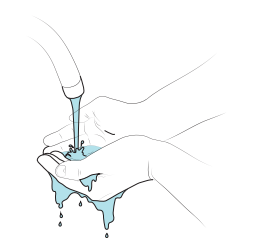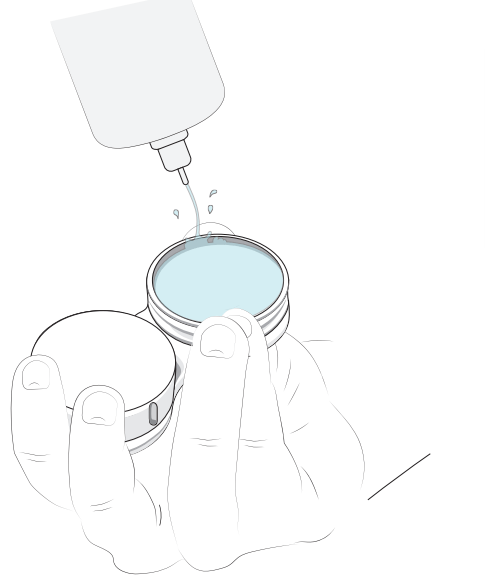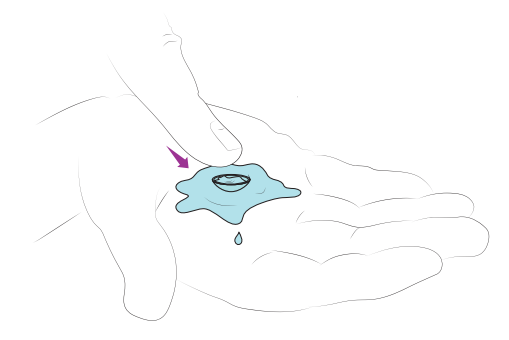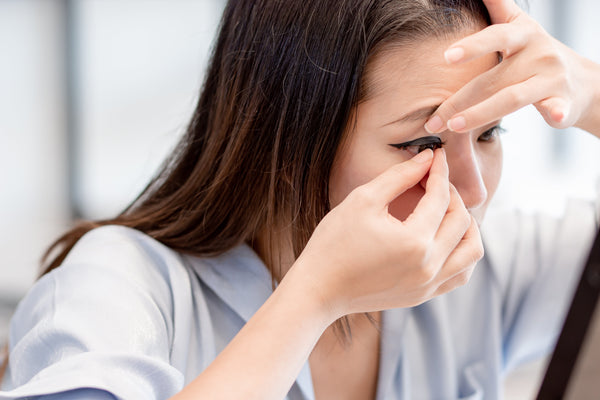
Contact lenses are a convenient alternative to glasses and have become more popular in recent years. While some people almost exclusively wear them, others alternate between their specs and contacts depending on the occasion or day. Part of wearing contact lenses is making sure you’re maintaining good hygiene which includes correct handling, cleaning, and storing of your contacts. It’s also important to clean your contact lens case regularly. Read on to learn more about why cleaning your contact lenses correctly is important and how to go about it.
How to clean contact lenses: step-by-step guide
Washing your hands, cleaning your lenses, rinsing them, and storing them correctly in disinfecting solution are all important steps to follow. They help to ensure you’re not introducing bacteria or debris to your eyes which can lead to infections or damage to your cornea with potential permanent side effects. It also helps to make sure your lenses themselves do now become damaged or dry out which can cause irritation and discomfort. The exact steps you need to follow may differ depending on your exact type of lens so make sure you’re following the instructions that your optician or contact lens manufacturer gives you.
Step 1: Wash your hands

The first step to cleaning your contact lenses is to wash your hands well. Good hand hygiene can help to minimise the risk of introducing bacteria and dirt or debris to your eyes, which can cause irritation, infection, and scratches. Use soap and warm water to thoroughly clean your hands for at least 20 seconds before drying with a lint-free towel or air dry. Avoid using scented or moisturising soaps that could leave a residue as this can transfer to your lenses. If you wear make up, it’s important that you remove and clean your lenses before removing your makeup to ensure you’re not rubbing your eyes or introducing makeup particles into your eyes or lenses.
Step 2: Fill Your contact lens case

Make sure your contact lens case is clean and dry before filling it with solution. Using a fresh, sterile contact lens solution (not water or saliva), fill the lens case with enough solution to cover the lenses. Don’t put them in the case just yet though.
Step 3: Clean the lenses

Remove one lens and place it in the palm of your hand. Apply a few drops of your cleaning solution and gently rub in a circular motion for 10-15 seconds. This helps to clean away any bacteria and dust that may have accumulated over the day so you’re not introducing the same germs back into your eye the next time you wear them. Repeat for the other lens.
Step 4: Rinse the lens
Rinse each lens thoroughly with your contact lens solution and make sure there’s none left on the lenses before storing them in the case. Rinsing helps to further remove any debris or residue and make sure your lenses are clean and ready to wear again.
Step 5: Store in the disinfecting solution

Place each cleaned lens into the lens case that you’ve filled with contact lens storing or disinfecting solution. Storing them this way ensures they stay hydrated and don’t dry out. Make sure if you have different prescriptions on each eye that you’re storing them in the correct side of your case – each compartment should be labelled ‘L’ for left and ‘R’ for right. Securely close the lids to prevent contamination.
How to clean rigid gas permeable contact lenses
Cleaning gas permeable contact lenses is a similar process to other types but requires specialised cleaning solutions which you can buy at most pharmacies. Additionally, because of their rigid nature, you will also need to take extra care in cleaning and storing them.
How to clean and store gas permeable contact lenses:
- Wash and dry your hands thoroughly before handling your lenses.
- Remove the contact lens from your eye and gently rub with the cleaning solution for around 20 seconds.
- Fill your case with your wetting or disinfecting solution.
- Rinse the cleaner from your lens with a conditioning or saline solution (not tap water), if you use a daily solution.
- Gently place your clean lenses into the case.
- Allow to rest overnight or as long as is recommended by the manufacturer or your optician.
How often should contact lenses be cleaned?
Daily disposable lenses do not need cleaning as they are single use. For lenses worn repeatedly (for example a monthly disposable contact lens), you need to make sure you are cleaning them each day. For extended wear (as some types can be worn for multiple days at a time) cleaning them every few days is recommended. It’s also a good idea to remove and clean your lenses if they feel uncomfortable or become cloudy or irritating for your eyes. However, these are just general recommendations and it’s important to follow instructions provided by your opticians or lens manufacturer for best results.
Learn how to choose the right contact lenses that fit your lifestyle
While looking after your contact lenses is an easy addition to your evening routine, it’s not for everyone. Which is why there are multiple different types of contact lenses available – from daily disposables to ones designed to be worn for multiple days without needing to remove them. If you’re considering looking into getting contact lenses, or just want a change, we can help you choose the right contact lenses that fit your lifestyle.








